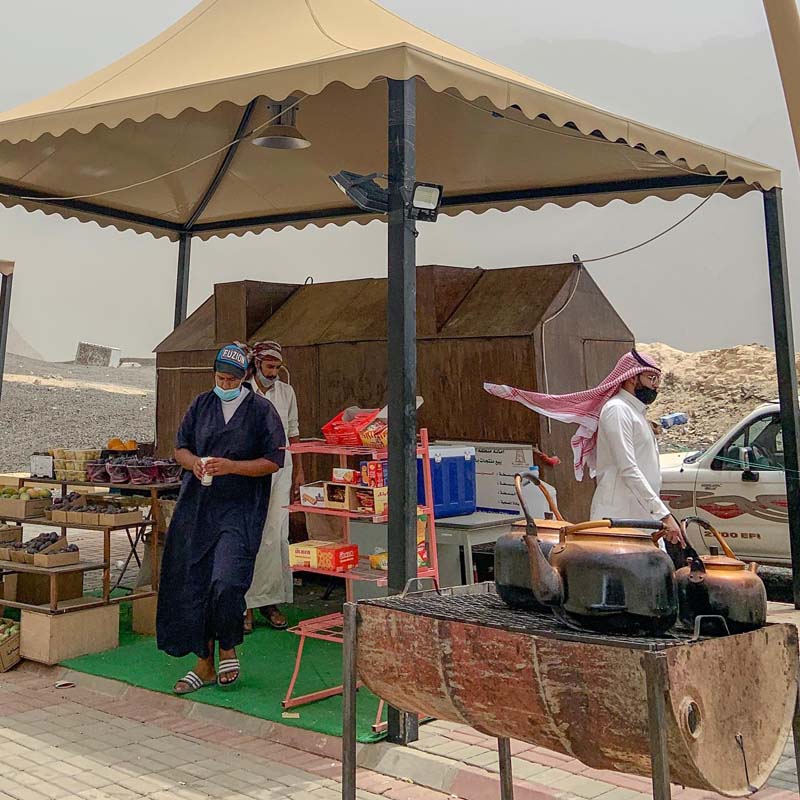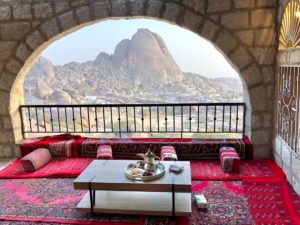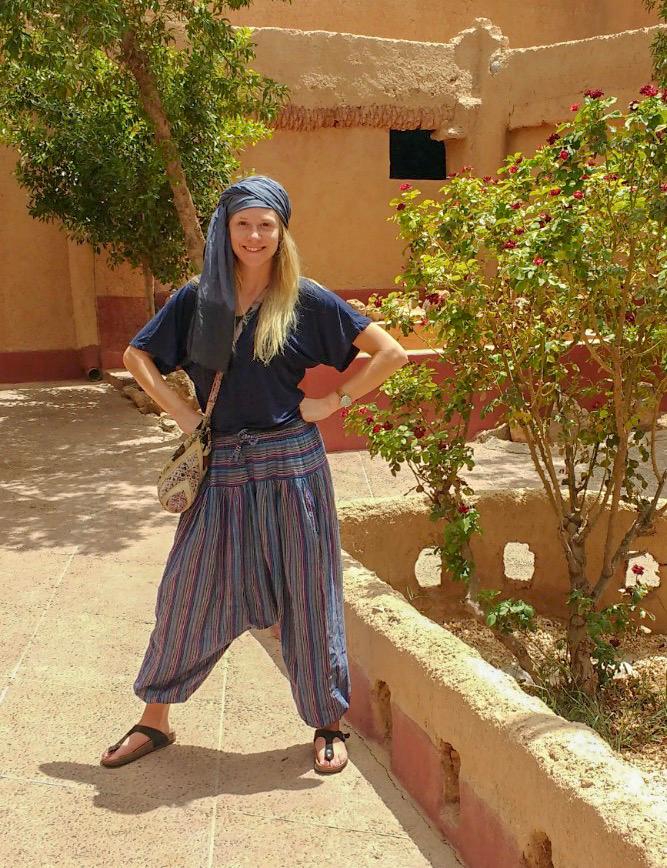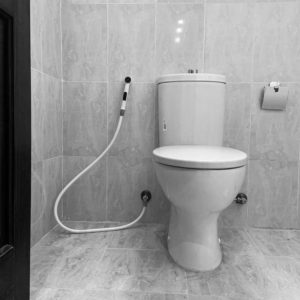Continuing with my trend of things we see on the side of the road (fake construction workers, shepherds), my eyes are always peeled for tea stands. The humble setups usually consist of a grill with copper kettles, a cooler of herbs, and a couple men sitting in lawn chairs. You pull your car up beside them, call out your order, and they’ll pour it and bring the cups to your window.
::
Our favorite order is “chai nana,” which is black tea with mint sprigs, with “mazboot” sugar. Mazboot means “correct; right” in Arabic… aka a lot of sugar. The piping hot tea has a smoky taste from simmering over the fire – something we can’t accomplish with a kettle at home. Other teas include chai karak or the Yemeni chai adani (a combo of black tea + cardamom/cinnamon/cloves/
::
At the stand in the photo (much more professional looking than the typical tea stand), we tried a new type of tea “chai iklyl jabal” (black tea with rosemary sprigs). Highly recommend. Drinking full cups of boiling tea while careening down precarious mountain roads? Not as highly recommend.
::
Despite intense temperatures, the tea is served year-round and people are here for it. Tea sellers set up their stands along highly-trafficked side roads within the city, and near the Corniche where many families go to picnic.
::
As a coffee junkie (and an American), I had never tried tea with milk in it until college when I studied in Spain. Because I was living in an area with Moorish influence, there were Arab-style tea and hookah cafes and it was there where I learned that tea could be an acceptable beverage. Thankfully I came to Saudi with an open mind and a willingness to give teas a chance.
::
Unrelated, but can we just admire how baller the guy in the photo looks with his shemagh perfectly whipping in the wind?

Our Journey through the Land of Midian in Saudi
When I was a child, learning about Moses in Sunday school and watching VeggieTales and The Prince of Egypt, I thought of places like the






